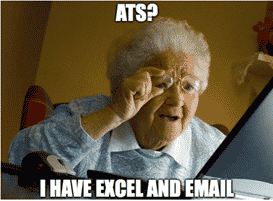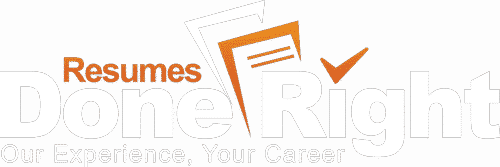Gone are the days of putting your best-dressed self forward and walking from employer to employer to meet the HR front desk staff to drop off your resume and, if you’re lucky, get an impromptu interview. Hopeful candidates today are required to submit applications digitally through a variety of methods including employer portals, email, LinkedIn, and job classified sites like Indeed or GlassDoor. Additional hoop-jumping often occurs in the form of retyping all the information you’re submitting on your resume in fields the system cannot populate. In addition to having no human contact in the application process, many resumes won’t even make it to the eyes of a human being. How is that, you ask? A little thing called ATS, or, Applicant Tracking System. This 3-letter acronym is what stands between you and your chance at an interview. So, what is ATS and how can you use it to your advantage? Used by over 95% of American Fortune 500 companies, and, according to one study, approximately 80% of Australian companies with 100+ employees, it’s inevitable that you will encounter this technology at some point in your pursuit of employment, especially as it becomes more ubiquitous over time. Let’s dig into some ATS facts for the everyday worker.
The Purpose of ATS
An Applicant Tracking System is a workforce management tool used by HR to sort through large volumes of resumes. ATS acts as a pre-screening process where the software will scan each resume received for keywords associated with the position including experience, education, and even soft skills like teamwork, critical thinking, or leadership. As resumes are read by the system, they are ranked according to the parameters set by the recruiter. The more criteria your resume hits, the higher you’re ranked and the more likely you are to be interviewed. This process ensures that the recruiter or hiring manager isn’t wasting time on non-qualified candidates and assists in making the recruitment process more time-efficient. While using ATS is certainly logical, particularly when an employer receives hundreds of applicants per job posting, for aspiring candidates who are unaware of the system, it’s a large barrier to their success. Luckily for you, dear reader, Resumes Done Right is here to help you with all your ATS needs.
How to Use ATS to Your Advantage
With the impersonal nature of today’s recruitment processes, candidates often need to rely solely on their resumes to get a chance at a callback. Thankfully, there are some tricks of the trade job-seekers can use to get their resumes to the top of the pile.
1. Read the job ad and pay attention to keywords

This is especially important if you’re trying to break into a new career ! If you do not have each of these items, ensure the ones you do have are included. Remember, the ATS is ranking your resume against the others. You may not be the #1 candidate based on the requested criteria, but perhaps you end up in the top 10 and still have a chance to wow them at the interview.
Hot tip: Don’t randomly insert or oversaturate keywords throughout your resume. Be thoughtful with where you use them for maximum impact. For instance, soft skills that need to be highlighted are perfect for your Objective Statement. For an example of an Objective Statement, check out Rule #1 for Preparing an Effective Resume.
2. Use relevant headings
When you’re considering the format of your resume, consider the headings. There should never be superfluous or redundant information on your resume and having clear headers like Education, Work Experience, and References will not only strike ATS gold but will also guide you with the information you’re including. Stick to your headlines!
3. Avoid graphics and inserted tables, shapes, or symbols
We all want our resumes to look appealing and unique to catch the eye of the recruiter, but ATS is not capable of reading images, tables, symbols, etc. Using these elements to spice up your resume will result in the ATS interpreting your resume as if you wrote it in wingdings. If the ATS can’t read it, it won’t rank you highly no matter how qualified you are.
4. Don’t forget to spellcheck!
The criteria for the ATS to scan for are inputted by a human and it is unlikely that they will account for typos. If the search word is “leadership” and you submitted a resume with “ledership” accidentally, that’s one less point on your ranking. Invest in a spellchecker or run your resume past a friend or family member to weed out any typos or misspellings. Oh, and don’t forget to check your Cover Letter too!
Need help?
Creating a new resume or tweaking an old one can be overwhelming, especially if you haven’t had to do it in some time. Resumes Done Right offers a free consultation to discuss all of your resume needs, be it formatting, content, or getting ATS tested. Reach out today and let us take care of the rest! You deserve it.

